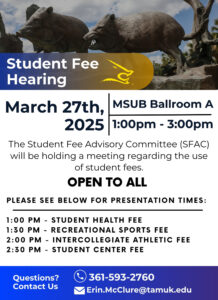Modern times have seen the transformation of classic “toon” tales into live-action films, but are these remakes truly honoring the originals?
These adaptations have graced movie theaters since the beginning of the film industry. In 1961 the cartoon movie “101 Dalmatians” was released in the United States. Disney was in debt following the flop of “Sleeping Beauty” in 1959 and desperately needed a hit.
There were even rumors of closing down the animation division, so the company could focus on live action films, television and theme parks. Thankfully, the movie became the highest grossing movie of 1961 in the United States.
Then in 1996 Disney decided to revitalize the movie as a live-action film. The legendary John Hughes wrote the screenplay and Glenn Close, Jeff Daniels, Joely Richardson and Hugh Laurie starred in the film.
“101 Dalmatians” was released on Nov. 27, 1996. It grossed $320.6 million in theaters against a $75 million budget. Many critics and Rotten Tomatoes claimed the film was “a bland, pointless remake,” but praised Close’s performance as Cruella de Vil. The film may have been described as a flop, but a second film followed.
More recently tales such as “Beauty and the Beast,” “Cinderella” and “The Jungle Book” have been adapted into live-action films receiving mixed reviews.
Many audiences find it hard to recreate certain aspects of the original films. For example, I personally was let down as I watched the live action “Beauty and the Beast” and did not hear Angela Lansbury sing during the famed dancing scene, and I found Lily James’s acting less than memorable in “Cinderella,” who is recognized as “the” Disney princess.
Despite having a stellar cast with Bill Murray, Idris Elba, Scarlett Johansson, Christopher Walken and newcomer Neel Sethi in “The Jungle Book,” the relationships between Mowgli (Sethi) and Baloo (Murray) fell very short compared to the original, but there were moments between Mowgli and Shere Khan (Elba) that are quite terrifying and help the movie’s storyline move forward.
All in all these motion pictures were tolerable with a few exceptional scenes.
But then there are some live-action movies that are better and more successful than the predecessor.
“Maleficent,” “Peter Pan” and “Pete’s Dragon” entangled me into their story more than the original ever did. In “Sleeping Beauty,” Maleficent is an evil fairy and the self-proclaimed “Mistress of All Evil” who, after not being invited to a christening, curses the infant Princess Aurora to “prick her finger on the spindle of a spinning wheel and die” before the sun sets on Aurora’s sixteenth birthday.
Although “Maleficent” is told from the mistress’ own perspective, Angelina Jolie gives the character depth, personality and the audience finds itself empathetic towards her.
In the original she was simply the evil villain who turns into a dragon, but in “Maleficent” we see there is more to her than anger and hate.
Peter Pan has been recreated various times. The 1991 adaptation “Hook” showed the audience what happens when Peter Pan grows up and leaves Neverland, and it’s hard not to love when Robin Williams plays the forever wonder boy.
Because of the 2003 adaption, I cannot watch the movie without chanting “I do believe in fairies! I do, I do,” as Tinkerbell almost dies in Peter’s hands after she drinks poison to save him.
For me, these live action adaptations are typically very shaky.
Sometimes they miss the mark, sometimes they surpass the originals and other times they land in the forest of adequacy.
I say audiences need to be wary and cautious when watching the live action films.
In the following months, and by next year, many adaptations such as “Aladdin,” “Dumbo,” “The Lion King,” “Cruella,” “Lilo and Stitch” and “Mulan” will debut in theatres. I won’t expect a miracle, but I’ll hope for the best.
The Award-Winning Texas A&M University-Kingsville Student Publication
